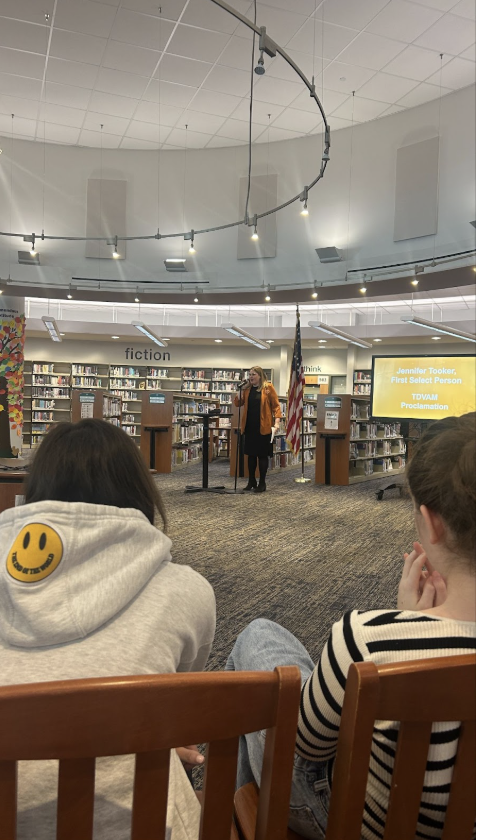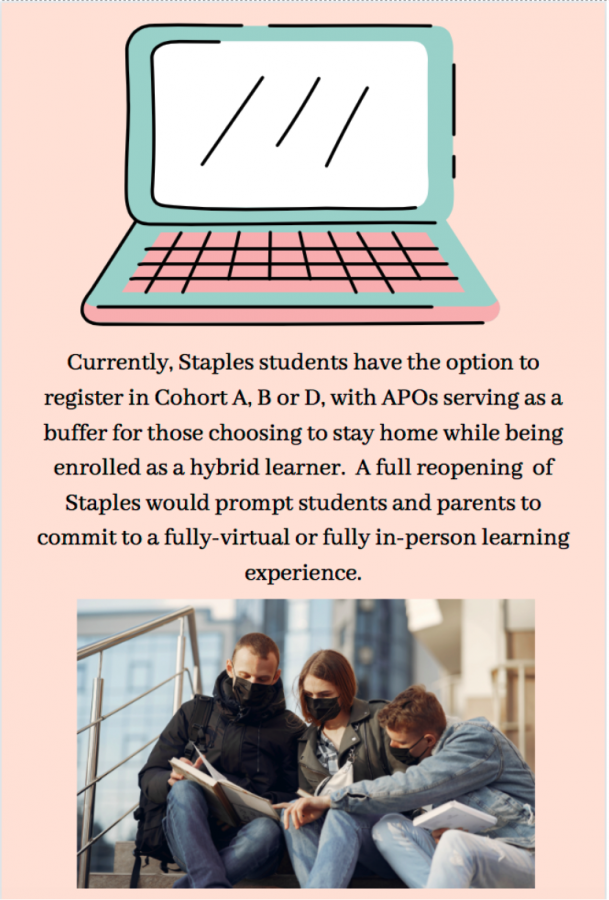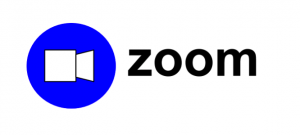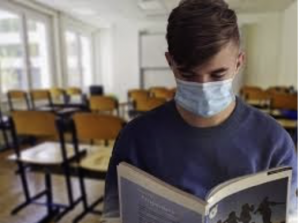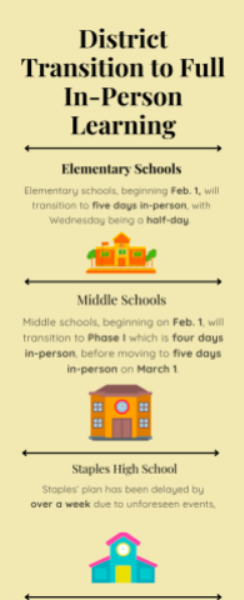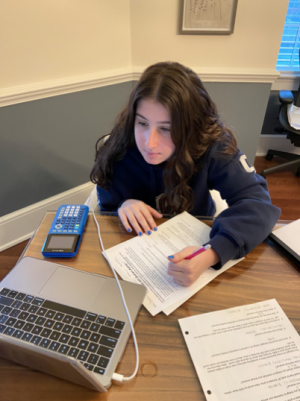Full return to school ideal, provides better education
As I groggily walk into Staples on Friday morning, navigating the one-way hallways to get to my first period class, I’m disappointed, but not surprised, to see only a few students in the classroom. The exact number of in-person learners fluctuates each week—sometimes there are five, seven, or as little as two or three in a room—but the overall depleting amount of students showing up to the building is a trend observable from both cohorts.
When school first opened back in fall, and 95% of students were projected to participate in the hybrid learning option, the A/B Cohort system was the most feasible way to keep Staples at half-capacity. Separating students into two groups ensured proper social distancing and COVID mitigation strategies, which provided students and faculty with an optimal learning experience while remaining cautious.
Now that the school year is half underway, however, Staples should offer students the option to be enrolled as either fully-on campus or fully-remote learners, which best honors teachers’ commitments to teaching in-person while still allowing students a choice.
The recent surge in cases due to the holiday season and impending February break prompting out of state travel dwindled hybrid learning participation to around 80% interest.
While the majority of students are still registered in either Cohort A or B, most of my teachers point out that classes are only half as full as expected based on their attendance list. My recent experiences, with gigantic Zoom calls during my at-home days and desolate classes when I come in person, seem to confirm this assertion.
With most students choosing to learn from home after the end of the first semester, it no longer makes sense to separate hybrid learners into two cohorts. It is illogical to expect teachers to come into the building four times per week—risking their health and safety in the process—to teach a practically empty class, when combining in person learners from both cohorts will still achieve half-capacity.
The most practical option at this point in the school year is a definitive return to on-campus learning, giving students the option to register as fully-distanced or fully in-person learners. Students who currently partake in the fully remote option are likely to continue learning at home, allowing the few students who choose to come into the building a decent-sized class with students in the other cohort.
Returning to school full time best considers the educational, social and safety needs of students while allowing teachers to more effectively manage the classroom. In-person learners will be afforded more attention from teachers, who are currently overwhelmed with massive Zoom calls of over 20 students. Combining hybrid learners from both cohorts will result in the intended 50-50 split between students in person and on Zoom, which will ease toggling between the physical and virtual classroom.
A full return to on-campus learning provides in person students the opportunity to build stronger relationships with their teachers and socialize with kids in the other cohort. In addition, students who choose to learn at home for reasons of safety and personal preference can better connect to their teachers and at-home peers as well, as Zoom meetings will no longer be overcrowded.
Switching to a fully in-person model also reduces the need for a plethora of attendance codes, which have thus far confused students and teachers alike. As of late, determining whether students are registered for Cohort A, B or D remains difficult, as many students have taken advantage of APOs for weeks or even months, unsure as to whether they should unenroll from their designated cohort.
A transition to fully in-person learning would require a fresh start in terms of registration, meaning the attendance lists can accurately reflect those who come into the building, and those who prefer to learn from the safety of their home.
This school year is certainly unusual, and circumstances around traveling, COVID numbers and personal learning preferences are constantly changing. The most effective way to establish a sense of normalcy and consistency at this point in the school year is a return to a fully-in person model.

Web Managing Editor Anastasia Thumser ’22 grew up as a writer, though the road wasn't easy.
“I kind of got off to a rough start in the class. It...















